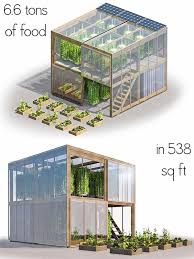
Breaking News
 Billionaire Businessman Reflects on 'Not Hard' Decision to Leave Crime-Ridden Chicago
Billionaire Businessman Reflects on 'Not Hard' Decision to Leave Crime-Ridden Chicago
 China's Mineral Power Play Will Succeed--Until It Doesn't
China's Mineral Power Play Will Succeed--Until It Doesn't
 Individualism and Self-Determination in the American Tradition
Individualism and Self-Determination in the American Tradition
 Gold's OMINOUS Warning: A Global Monetary Reset That'll BLINDSIDE Americans
Gold's OMINOUS Warning: A Global Monetary Reset That'll BLINDSIDE Americans
Top Tech News
 3D Printed Aluminum Alloy Sets Strength Record on Path to Lighter Aircraft Systems
3D Printed Aluminum Alloy Sets Strength Record on Path to Lighter Aircraft Systems
 Big Brother just got an upgrade.
Big Brother just got an upgrade.
SEMI-NEWS/SEMI-SATIRE: October 12, 2025 Edition
 Stem Cell Breakthrough for People with Parkinson's
Stem Cell Breakthrough for People with Parkinson's
 Linux Will Work For You. Time to Dump Windows 10. And Don't Bother with Windows 11
Linux Will Work For You. Time to Dump Windows 10. And Don't Bother with Windows 11
 XAI Using $18 Billion to Get 300,000 More Nvidia B200 Chips
XAI Using $18 Billion to Get 300,000 More Nvidia B200 Chips
 Immortal Monkeys? Not Quite, But Scientists Just Reversed Aging With 'Super' Stem Cells
Immortal Monkeys? Not Quite, But Scientists Just Reversed Aging With 'Super' Stem Cells
 ICE To Buy Tool That Tracks Locations Of Hundreds Of Millions Of Phones Every Day
ICE To Buy Tool That Tracks Locations Of Hundreds Of Millions Of Phones Every Day
 Yixiang 16kWh Battery For $1,920!? New Design!
Yixiang 16kWh Battery For $1,920!? New Design!
 Find a COMPATIBLE Linux Computer for $200+: Roadmap to Linux. Part 1
Find a COMPATIBLE Linux Computer for $200+: Roadmap to Linux. Part 1
Flatpack Urban Farm Grows 6.6 Tons of Food in 538 Square Feet

This flatpack urban farm only takes up 538 square feet, but its creators say that it can yield as much as 6 tonnes (6.6 tons) of fresh produce per year.
Danish company Human Habitat has developed a hydroponic garden system that requires just 538 square feet of space to grow fresh food. Its two story design doubles the amount of food that can be grown per square foot. Not only can their flatpack urban farm be squeezed into almost any available space in cities, it could also be set up anywhere access to fresh food is needed.
It is called an Impact Farm by its creators, Mikkel Kjaer and Ronnie Markussen. The flat pack hydroponic garden design allows it to be shipped virtually anywhere. The Impact Farm can be unpacked, set up and be in operation in just 10 days. and is suitable for both commercial and community needs. It is capable of growing greens (and microgreens), vegetables, herbs, and fruiting plants in its two-story frame. The produce is grown hydroponically, which means the only thing necessary for growing fresh food locally is water.
"We wanted to reconnect people to food by giving them a green space that brings nature back into our cities," Kjaer tells Collectively. By giving people a useful skill to learn and opportunities for employment, urban farm addresses the problems of low employment and inaccessibility to fresh food. Food deserts are of particular interest to the founders. Those are inner city neighborhoods that are under-served by traditional grocery stores.
The food desert issue has been addressed recently by the USDA, which administer the SNAP program in the US. It will now require merchants who service people on Food Stamps to provide fresh food instead of just cookies, snacks, and other highly processed packaged foods. A nearby Impact Farm could help fill that need.
The first Impact Farm hydroponic garden is now operating in Copenhagen, Denmark. There are plans to build more of the urban farms in other European cities. The founders are also investigating the US market. The Impact Farm is similar in nature to the Freight Farms concept that started in Boston recently. That company re-purposes shipping containers to become hydroponic gardens that can be trucked anywhere.



